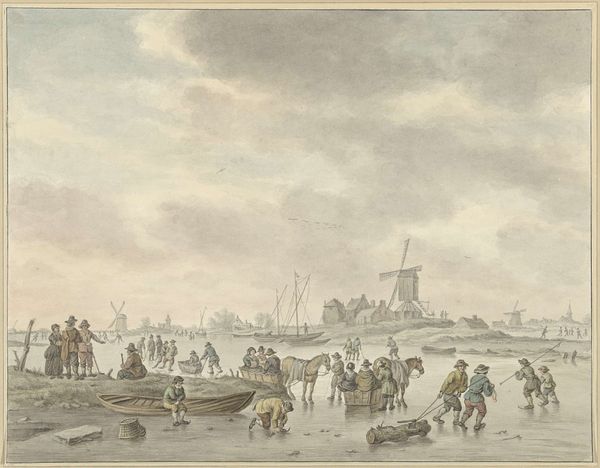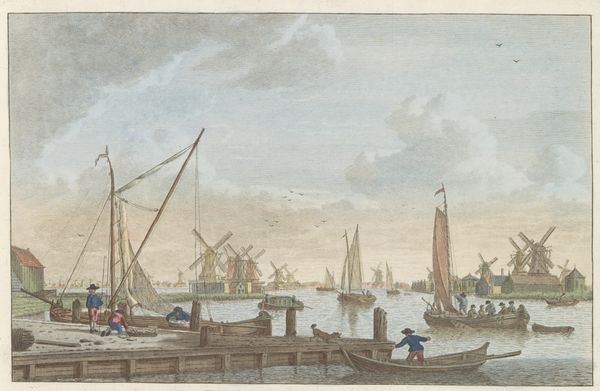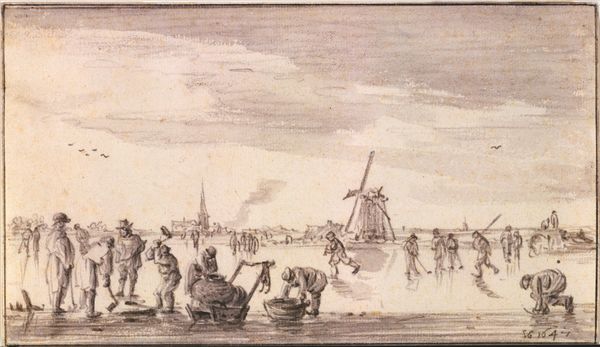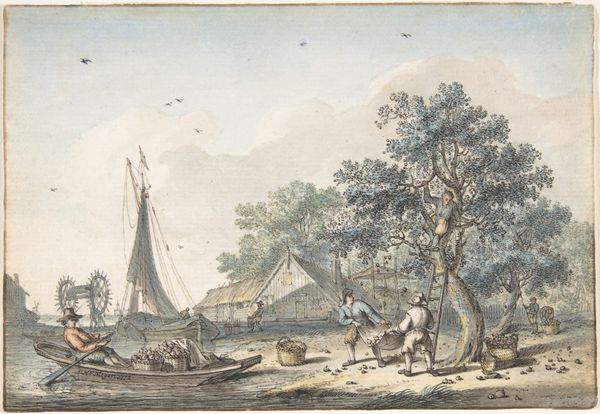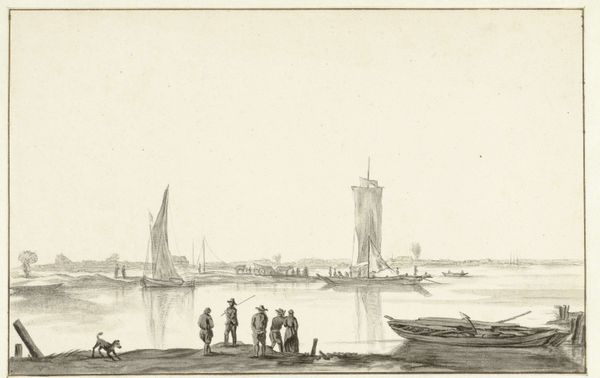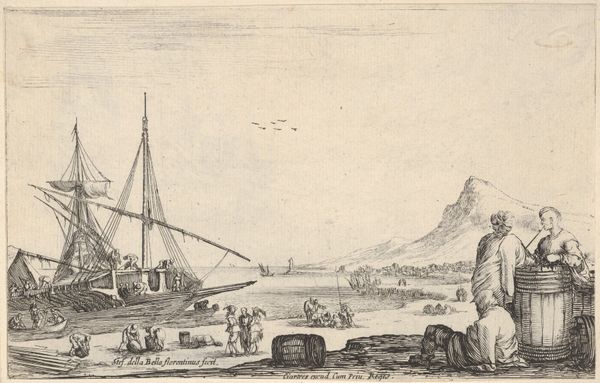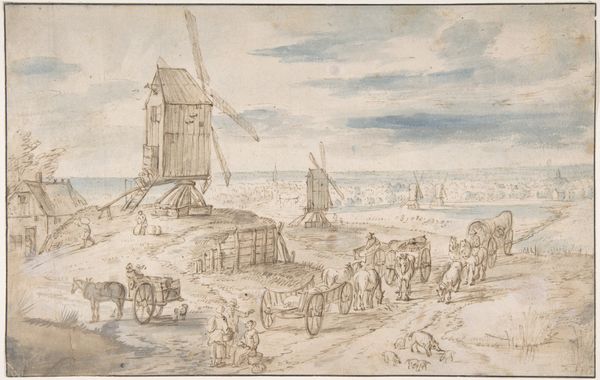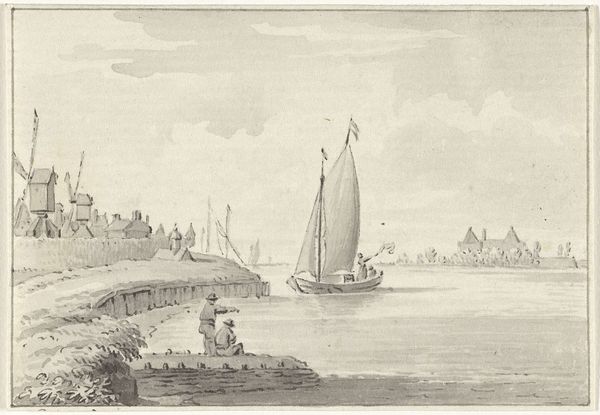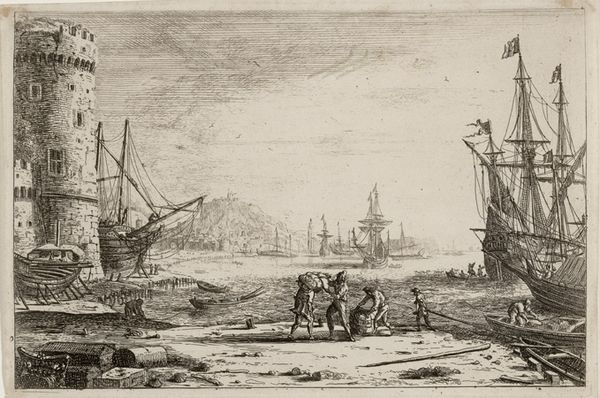
painting, watercolor
#
dutch-golden-age
#
painting
#
landscape
#
watercolor
#
cityscape
#
watercolour illustration
#
genre-painting
#
realism
Dimensions: height 188 mm, width 302 mm
Copyright: Rijks Museum: Open Domain
Curator: What a charming depiction of a winter scene. Gerrit Grasdorp, likely between 1661 and 1693, created this watercolour, "Wintergezicht op het Zwarte Water bij Zwolle(?)," which translates to Winter View of the Black Water at Zwolle. The scene gives such a feel for Dutch life at the time. Editor: It certainly does evoke a particular mood—I’d call it understated and somewhat precarious. The icy expanse seems vast and the figures are small, dwarfed by the pale sky. I keep looking at those figures attempting to navigate the ice and their gestures as clues about their experience. It is making me reflect on fragility, literally in the people moving on the ice but also more broadly on existence itself. Curator: That is a fair assessment, especially considering the Little Ice Age period during which it was made, which affected the lives of those in Northern Europe considerably. I see the frozen river as representing how natural elements impacted daily life and social activities of the 17th century Dutch population. The artist seems less interested in individual portraiture and more in conveying communal activity on this shared, frozen landscape. Genre painting indeed, as they navigated their lives and social relationships in ways very much dependent on and dictated by their environmental factors. Editor: Precisely! Water, of course, is one of the fundamental and multifaceted symbols –- purity, cleansing, life and, paradoxically, also chaos and the unknown. Grasdorp plays on this contrast, trapping people on the river, their freedom suspended, on this vast sheet of ice. Notice how that horizon with the Zwolle cityscape almost serves as an aspirational idea of life away from the dangers. The windmill almost takes on a religious symbolism of hope and maybe an encouragement to persevere to get to dry land on the other side! The ice almost represents a purgatorial moment of uncertainty about what the near future holds. Curator: Very insightful, I agree that Grasdorp captures both the charm and precarity. And that city line that perhaps also gives people the encouragement to pursue life in a well managed urban area where nature might have slightly less dictatorial power. This watercolour is part of the Dutch Golden Age and that aesthetic also reminds us to perhaps not read the moment as hopeless because there were immense technological, artistic, and societal achievements to be celebrated at that moment in time, despite their struggles against nature! Editor: Thank you! Overall, I think the subdued palette reinforces that idea of a certain humility towards nature while that windmill encourages people to keep going, a subtle yet beautiful piece of social commentary with layers to unravel.
Comments
No comments
Be the first to comment and join the conversation on the ultimate creative platform.

